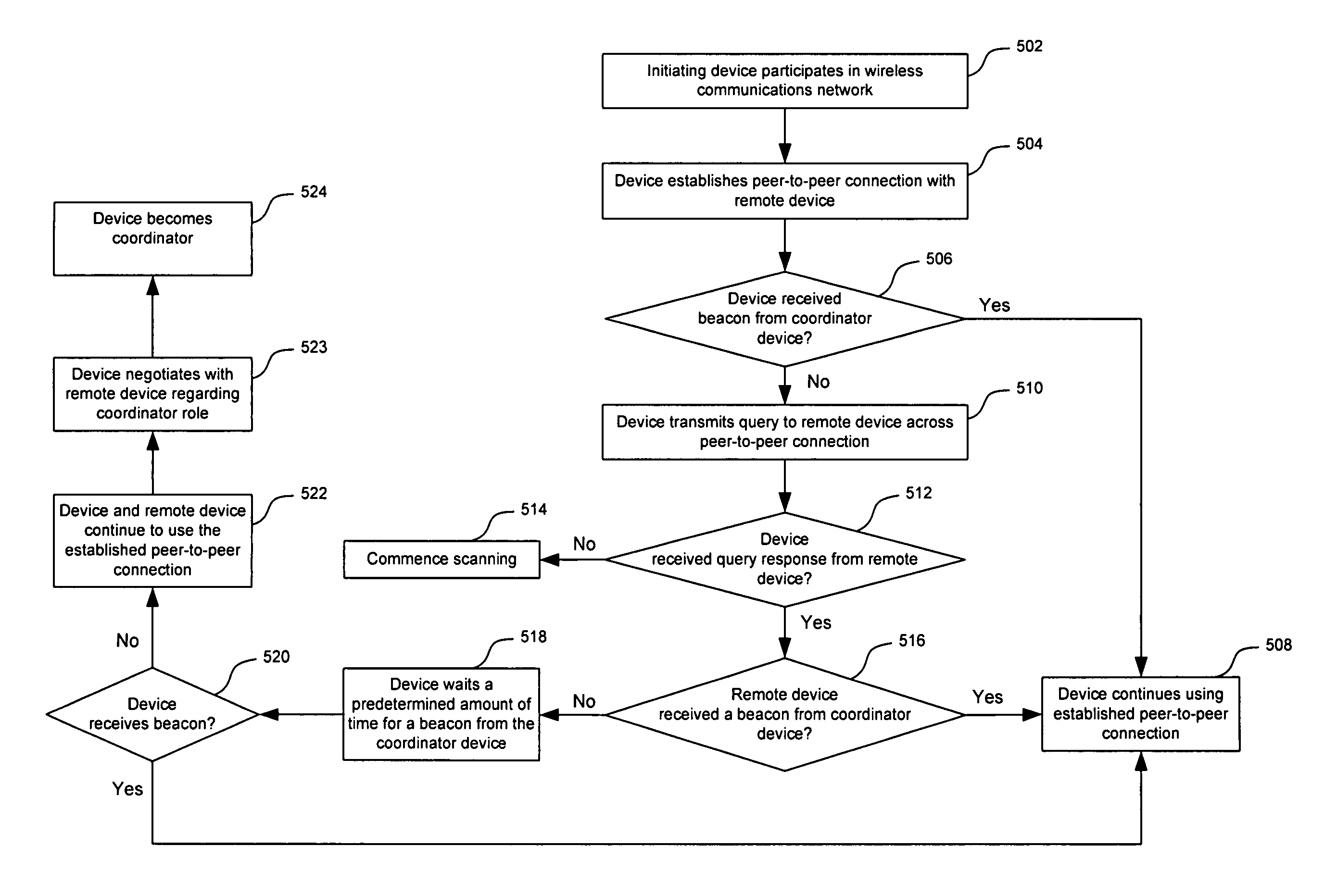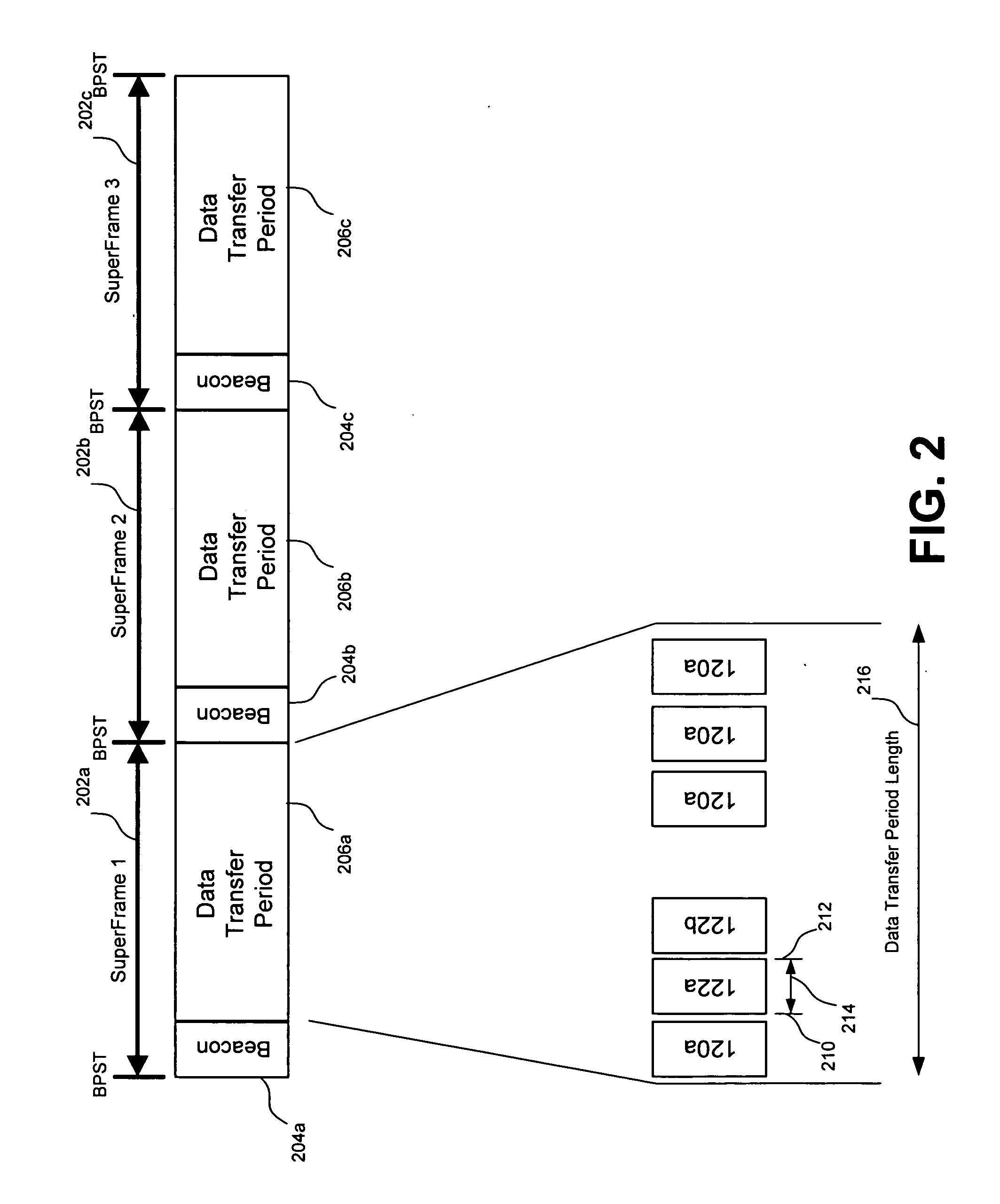Recovery techniques for wireless communications networks
a wireless communication network and wireless communication technology, applied in the field of wireless communications, to achieve the effect of preventing information loss and saving tim
- Summary
- Abstract
- Description
- Claims
- Application Information
AI Technical Summary
Benefits of technology
Problems solved by technology
Method used
Image
Examples
Embodiment Construction
I. Operational Environment
[0027]FIG. 1 is a diagram of an environment in which the present invention may be employed. In particular, FIG. 1 shows a short-range wireless communications network 100 having multiple wireless communications devices. These devices include a coordinator device 104 and multiple slave devices (DEVs) 102. Accordingly, network 100 may be an ad hoc network such as, for example, an IEEE 802.15.3 piconet or a Bluetooth network.
[0028] In network 100, each of DEVs 102 may communicate with coordinator device 104 across a corresponding link 120. For instance, FIG. 1 shows DEV 102a communicating with coordinator device 104 across a link 120a, DEV 102b communicating with coordinator device 104 across a link 120b, DEV 102c communicating with coordinator device 104 across a link 120c, and DEV 102d communicating with coordinator device 104 across a link 120d.
[0029] Each of these links 120 are referred to herein as indirect links when considering communications between D...
PUM
 Login to View More
Login to View More Abstract
Description
Claims
Application Information
 Login to View More
Login to View More - R&D
- Intellectual Property
- Life Sciences
- Materials
- Tech Scout
- Unparalleled Data Quality
- Higher Quality Content
- 60% Fewer Hallucinations
Browse by: Latest US Patents, China's latest patents, Technical Efficacy Thesaurus, Application Domain, Technology Topic, Popular Technical Reports.
© 2025 PatSnap. All rights reserved.Legal|Privacy policy|Modern Slavery Act Transparency Statement|Sitemap|About US| Contact US: help@patsnap.com



